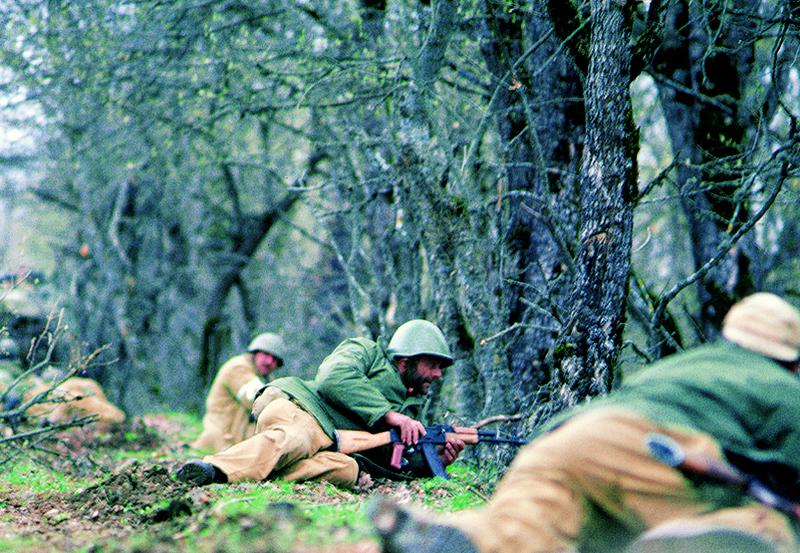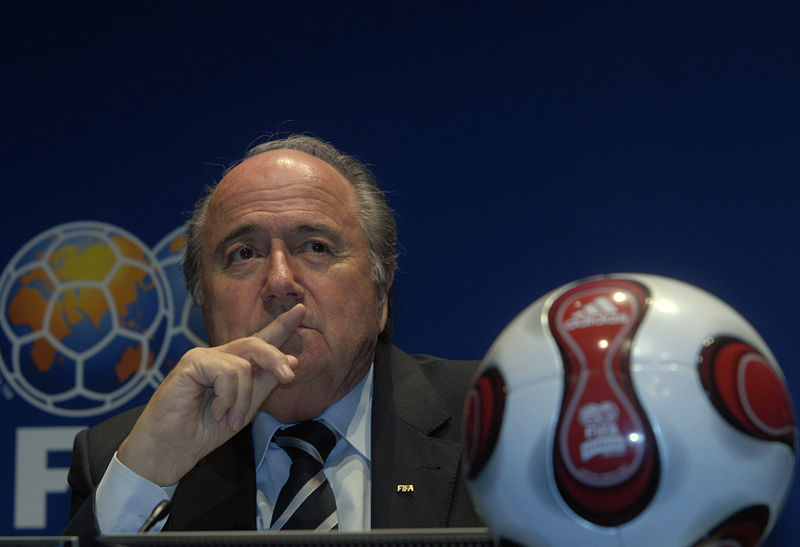On February 19, 2004, Lt Ramil Safarov of the Azerbaijani Armed Forces murdered Lt Gurgen Margaryan of the Armenian Armed Forces with an axe. The two men were participating in an English language training program in Budapest, as part of NATO’s “Partnership for Peace” campaign.
In his subsequent confession to Hungarian authorities, Safarov expressed his premeditated motive for the savage killing:
“When [Margaryan and another Armenian officer, Hayk Makuchyan] walked close to me they […] mumbled something in Armenian and laughed at me. That was the time when I decided that I will kill these two persons, the Armenians, I will cut their head[s] off.”
Safarov killed Margaryan in his room at 5 am, while he was asleep and then turned his attention to the second Armenian student, Hayk Makuchyan, but was apprehended by the police before he could fell Makuchyan’s door with his axe.
After serving eight years of his life sentence in Hungary, Safarov was granted extradition to Azerbaijan to serve the remainder of his sentence. However, immediately upon arrival he was personally pardoned by President Ilham Aliyev, promoted to the rank of Major, and allotted back pay for the eight years that he spent behind bars.
Unsurprisingly, Armenians objected vehemently to this hero’s welcome. For Hungarian Prime Minister Viktor Orbán’s role in allowing Safarov to be extradited, Armenian diplomatic relations with Hungary were immediately suspended. Protesters in Yerevan threw eggs and tomatoes at the Hungarian Consulate, and set fire to Hungarian flags and pictures of Safarov.
insight into Safarov’s motives can be found in a chilling statement, directed at Margaryan’s Hungarian roommate, while Safarov committed the grisly murder:
“I told him this is not your business; this is the business of Armenians and [Azerbaijanis].”
This “business,” to which Sarafov refers, is the issue of a territorial conflict, internalized to become the core of mutually antagonistic national identities. For years before the establishment of the Soviet Union, Armenians and Azerbaijanis clashed over the disputed territory of Nagorno-Karabakh, claimed by both ethnic groups. In 1921 the Bolsheviks, who had occupied most of the South Caucasus region, had promised the territory, along with neighbouring regions Zanzegur and Nakhchivan, to Armenia.
However, Joseph Stalin, then acting Commissar of Nationalities, was worried that Turkey would be deterred from joining the Soviet Union by Moscow’s willingness to grant territory to Turkey’s enemy. In an unsuccessful appeal for Turkish participation in the Union, Joseph Stalin overruled the earlier decision and in July 1923 officially awarded Nagorno-Karabakh and Nakhchivan to Azerbaijan instead, ignoring the reality that 94% of the Karabakh population were ethnic Armenians.
Over the next 65 years, the Karabakh Armenians felt that the Azerbaijani government practiced discriminatory “Azerification” policies against its majority population. The Soviet Union’s rapid collapse triggered violent conflict in 1988 after Nagorno-Karabakh declared its independence from Azerbaijan. The conflict, which quickly escalated into full-scale warfare, was punctuated by inter-ethnic cleansing, pogroms, and massacres from late 1992 until mid-1994. After an Armenian military victory, Nagorno-Karabakh claimed de facto unrecognized independence. Presently the UN affirms that Azerbaijan maintains de jure authority over the region. Nearly 25 years later, the conflict has claimed over 100,000 casualties and has displaced approximately one million civilians.
Today, the Azerbaijan-Karabakh border remains incredibly combustible, as the two sides remain at a provisional, yet tenuous, peace through the apathetic observation of the 1994 Bishkek ceasefire. Makeshift trenches and fortifications face each other across a 150-metre no-man’s land. As BBC reporter Simon Reeve expressed during his visit to the Karabakh front line,
“You are left feeling that there is no natural end to this conflict. It feels as if it could go on for many years to come.”
Much of the news coverage surrounding Nagorno-Karabakh has unfortunately served to project the conflict as timeless, by overemphasizing the role of religion and the near-absolute majorities of Orthodox Christians and Muslims in Armenia and Azerbaijan respectively.
In truth, the crux of the Nagorno-Karabakh conflict is not ancestral or religious, but more recent and territorial, and centres around how this territory factors into the national identities of both Armenians and Azerbaijanis. Both sides have internalized the conflict to the point where hatred of the other side has become a national imperative. Just as Safarov viewed his actions as a righteous fulfillment of his national duty, the Armenian demand for further punishment is seen as a necessary and just action.
The exclusivity of these competing ideological mandates is precisely what precludes a simple resolution to this conflict. Concerted efforts at a sustainable peace are further stalled by the competing and embellished national narratives surrounding Nagorno-Karabakh, which serve to perpetuate the enmity of the conflict. Hakob Badalyan, political commentator at Armenian news network Lragir, wrote an article in March 2015 entitled “Armenia Will Make Baku’s Day: Safarov Will Light Olympic Fire.” The article details Safarov’s rumoured involvement in the torch relay of the inaugural European Games, held in the Azerbaijani capital of Baku in June.
The position of torch-bearer is typically reserved for those who best represent the values and national identity of the host country. Therefore, if one pays close attention to how the host nation chooses to project itself with the whole world watching, much can be illuminated about how the state in question sees itself.

Allowing an unapologetic murderer to assume the position of national hero at the European Games certainly would send an unfortunate and threatening message to Armenia, as well as to the international community. It would project the idea that the conflict is not nearing an end, and that Azerbaijan has neither the interest nor the will to take a further step towards a protracted peace agreement.
However, thorough investigation into the corroboration of this story has revealed no evidence of its validity. Neither photos nor videos have surfaced, the story was not reported by any other news agency, and repeated requests for a comment from Mr. Badalyan received no responses.
It looks increasingly likely that this story is nothing but a rumour. And this rumour, in itself, projects another message from Armenia back to Azerbaijan, and to the international community at large.
If the author of the article hoped to elicit a passionate anti-Azerbaijani instinctual response within Armenian readers, then it is telling that this is the subject he chose. His decision reveals that although the murder occurred over a decade ago, the Safarov case still carries enormous emotional impact today, and is embedded within the collective national psyches of both Armenians and Azerbaijanis. And these competing narratives, coupled with the exclusivity of the two national imperatives, precludes this conflict from being resolved in the foreseeable future.
Editor’s Note: The author would like to thank all those who helped conduct research for this article using local Armenian and Azerbaijani news services.






